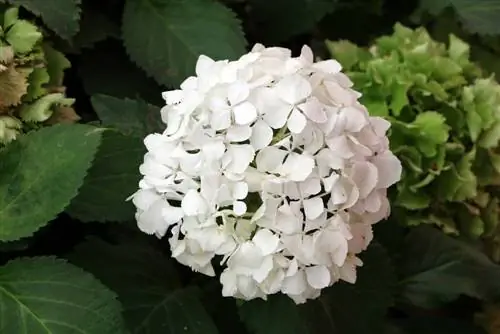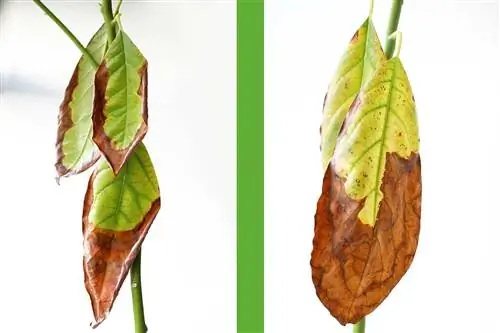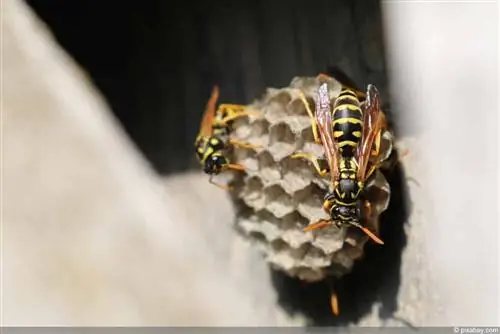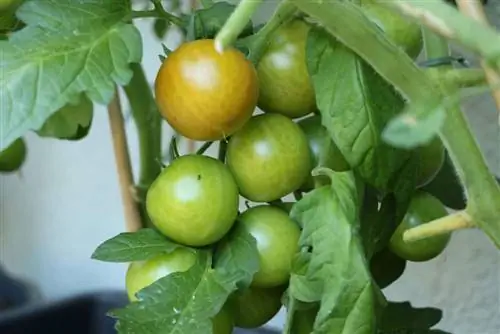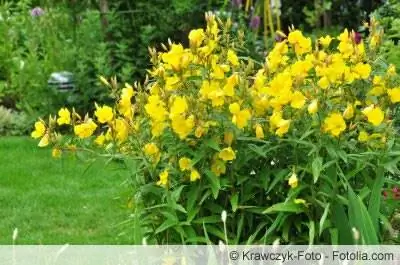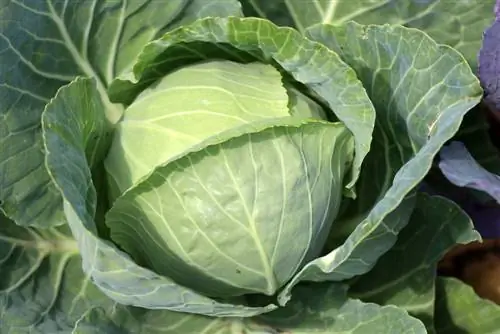- Author admin [email protected].
- Public 2023-12-17 03:39.
- Last modified 2025-06-01 06:48.
Hydrangeas are known in botanical terms as hydrangea and are a true ornament in the garden or on the terrace. Their large, spherical inflorescences attract everyone's attention. Another special feature is that they can change their color. Depending on the variety, the pH value of the soil and other factors, the color of the flowers can be changed in a targeted manner.
Varieties
You can find white, pink and blue hydrangeas in stores. However, the different varieties differ not only in the current color, but also in the size and shape of the flowers and their suitability for certain locations. However, the variety also has an impact on whether the hydrangea can change color or not. In general, variants in pink and blue can alternate between the colors. An acidic pH value of the soil and sufficient trace elements in the substrate ensure that the plants bloom blue. However, at a higher pH value, the flower color gradually turns into pink tones.
The situation is different if it is a really white variety. This is because they cannot change the color of their flowers - regardless of the acidity of the substrate and the trace element content. The first rule for keeping a white hydrangea white is to choose the right variety or breeding form. Corresponding breeding forms include:
- Annabell
- Cordifolia
- Grandiflora
- Hanabi
- Harmony
- Hayes Starbust
- Little Lime
- Miranda
- Phantom
- Semiola
- Silver Lining
Tip:
Some varieties are special because they change their flower color automatically and without external influences as they bloom. These include, for example, Wims Red and Pee Wee, Snow Flake and Snow Queen, which initially bloom white and then pink to red. With these it is not possible to preserve the white.
Substrate and pH value
The substrate and its pH value have a decisive influence on whether the hydrangea changes color. The more acidic the soil, the greater the chance that the flowers will turn blue. As a rule, the required values for blue flowers are in the range from 4 to 5.5. However, there are slight differences between the different varieties here too.

At values above this range, the substrate is neutral to basic. Neutral pH values favor white flowering. Basic values, however, pink flowers. Therefore, if there is a change in color, a sample of the soil should be tested and the pH adjusted accordingly. Suitable substrate types include special hydrangea soil but also rhododendron soil.
It is recommended to use oak leaves, peat or coffee grounds to acidify the substrate. The advantage of these products is that they fertilize the soil at the same time and can therefore also be used to nourish the plants. Lime can be used to neutralize the pH of the substrate or make it alkaline.
Nutrients
Just like the substrate, the amount and type of nutrients present in the soil also play a role in the color of the flowers. If the petals have a pink tone, it can therefore help to use appropriate fertilizers. Aluminum oxide and alum are particularly suitable and efficient for preserving white flowers. These are absorbed via the roots of the hydrangea and gradually change the color to a bluish direction. If they are missing in the substrate, a reddish tint must be expected.
Since the process of nutrient absorption and coloring requires some patience, action should be taken at the first sign of an undesirable color change. The easiest way to do this is to use special fertilizers. So-called “hydrangea blue” is one option for this. Experience has shown that hydrangea fertilizer, rhododendron fertilizer and the direct application of alum are also effective.

